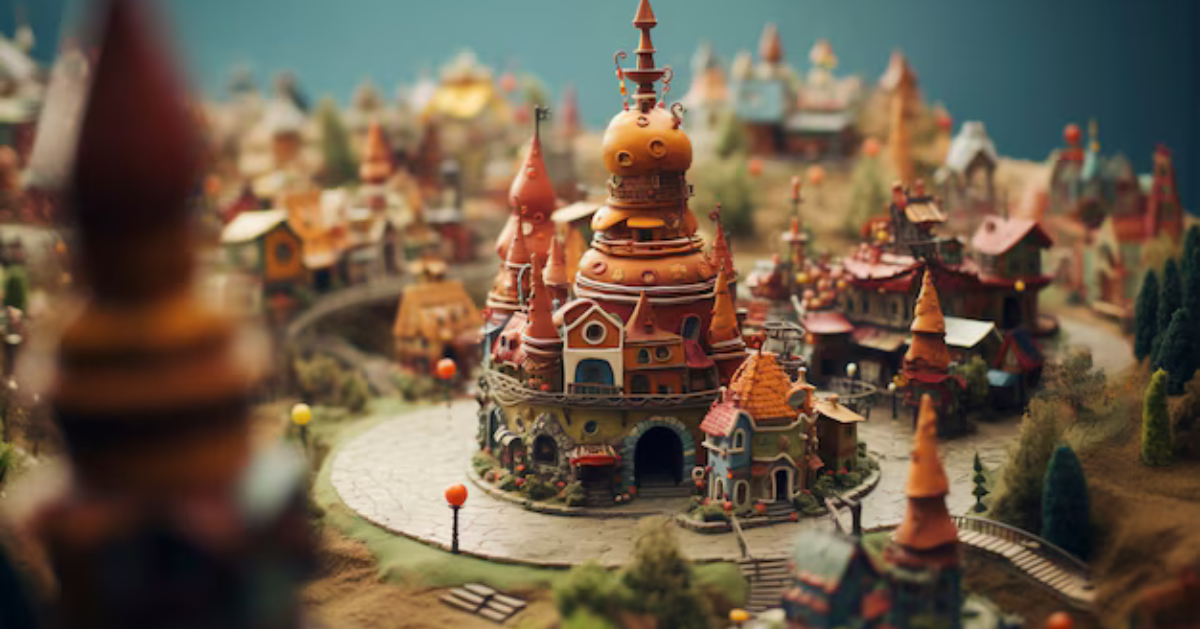Ochre City—ever heard of it? You might think it’s a quaint, tucked-away destination that doesn’t make the usual tourist lists. But you’d be wrong! This city is brimming with history, culture, and an undeniable charm, making it one of the hidden gems for those who know where to look. In this article, we’ll explore everything that makes Ochre City unique: from its origins and vibrant culture to its natural beauty and modern-day significance.
What is Ochre City?
Ochre City is a name often used to refer to a specific location, sometimes in reference to a place famous for its rich history with ochre—a natural earth pigment known for its distinctive yellow to reddish-brown hues. However, the term can also refer to a region renowned for its striking natural landscapes and cultural significance.
The Origins of Ochre City
The story of Ochre City begins long before it was a recognizable urban area. Historically, this location has deep connections with ancient human settlement, specifically indigenous communities that used ochre for painting, ceremonial purposes, and even trade. These early settlers left a lasting legacy on the land, influencing its development.
Geography and Location
Ochre City is often associated with regions where ochre deposits are abundant—think of places like Western Australia, the American Southwest, or parts of Africa. The geographical layout of the city blends natural beauty with human ingenuity. The area is characterized by rugged terrains, red deserts, and unique rock formations that serve as a visual reminder of the earth’s ancient history.
Cultural Influence of Ochre City
Art and architecture play an essential role in the cultural fabric of Ochre City. The influence of ochre, as both a material and a concept, extends far beyond just pigment—it is ingrained in the way people live, create, and relate to their environment. Traditional artworks often include depictions of local wildlife, indigenous rituals, and stunning landscapes. Many structures in the city echo traditional designs, bringing together local aesthetics with contemporary construction.
Ochre City and Indigenous Heritage
At the heart of Ochre City’s identity is its strong connection with indigenous cultures. The indigenous peoples of the region used ochre in a variety of ceremonial, medicinal, and artistic practices. Preserving this heritage is a priority for the city, and it continues to inspire modern-day artists, architects, and residents.
Economic Development of Ochre City
From its humble beginnings as a trading post or mining settlement, Ochre City has grown into a thriving hub of commerce and industry. Today, the city is a focal point for tourism, local artisans, and sustainable agriculture. While modern industries have shifted toward technology and renewable resources, the historical significance of trade, especially in ochre and related minerals, still holds value.
Tourism in Ochre City
Ohre City has become a destination for those seeking to immerse themselves in a unique blend of nature, history, and culture. Visitors flock to the city for its stunning landscapes, art galleries, festivals, and rich indigenous culture. Major tourist attractions include ancient rock art sites, vibrant street markets, and eco-lodges that provide sustainable stays amidst nature’s wonders.
Environmental Aspects of chre City
The environment surrounding chre City is not just a backdrop to its human history—it is an active player in the city’s identity. The flora and fauna found here are diverse, with plant life that thrives in the region’s arid conditions and wildlife that includes native birds, reptiles, and mammals. Conservation is a critical focus, as urban expansion and industrialization pose threats to the delicate balance of the ecosystem.
Ohre City’s Architecture
In terms of architecture, chre City is an intriguing mix of old and new. Traditional homes are often built using local materials like mud bricks, wood, and of course, ochre itself. These buildings blend seamlessly into the natural surroundings. However, modern structures also reflect contemporary influences, incorporating sustainable designs and eco-friendly materials to create a cityscape that respects both history and innovation.
Ohre City’s Role in Art
Ochre, the pigment itself, is at the heart of many local art practices. From paintings on canvas to large-scale murals and pottery, the use of ochre serves as a reminder of the connection between the people and the land. Artists from Ohre City have gained global recognition for their ability to capture the beauty of the landscape and cultural narratives through the rich tones of ochre.
Festivals and Events in Ohre City
Every year, Ohre City comes alive with festivals and events that celebrate its history, culture, and artistic endeavors. Whether it’s an annual art festival, indigenous celebrations, or music festivals that highlight local talents, there’s always something going on that brings the community together and welcomes outsiders.
Ohre City’s Education and Institutions
Education and research institutions in Ohre City play a pivotal role in preserving the city’s cultural and historical heritage. Universities and museums focus on preserving indigenous traditions, while contemporary institutions work to further study the land, environment, and ochre’s unique properties. These educational establishments foster creativity, innovation, and a deeper understanding of the city’s roots.
Challenges Facing Ohre City
Despite its rich history and cultural significance, Ohre City faces several challenges. Urbanization threatens the preservation of indigenous sites, and the expansion of modern industries poses environmental risks. The city must balance growth with conservation efforts to maintain the delicate harmony between culture, history, and the environment.
Future of Ohre City
The future of Ohre City is a promising one. With increasing recognition of the city’s cultural and ecological value, plans for sustainable development are already in motion. The city aims to develop eco-friendly infrastructures, improve the quality of life for residents, and continue its role as a global hub for art and culture.
Conclusion
Ochre City is more than just a name—it’s a testament to human ingenuity, nature’s beauty, and cultural preservation. Whether you’re an artist, a traveler, or someone interested in history, Oche City offers something for everyone. As it continues to grow and evolve, its commitment to sustainability and cultural heritage remains unwavering, making it a beacon of hope for the future.
FAQs
What is Ochre City known for?
Ochre City is known for its rich indigenous history, stunning landscapes, and cultural contributions to the world of art and architecture.
Is Ochre City a popular tourist destination?
Yes, Ochre City attracts visitors from all over the world who come to experience its unique blend of nature, history, and culture.
How is ochre used in the city’s culture?
Ochre is used in art, architecture, and ceremonies, playing a central role in the identity of the city and its indigenous heritage.
What are the major challenges facing Ochre City?
Ochre City faces challenges related to urban development, environmental conservation, and the preservation of its indigenous heritage.
What is the future of Ochre City?
The future of Ochre City is focused on sustainable growth, preserving its cultural heritage, and fostering innovation in art, education, and industry.










